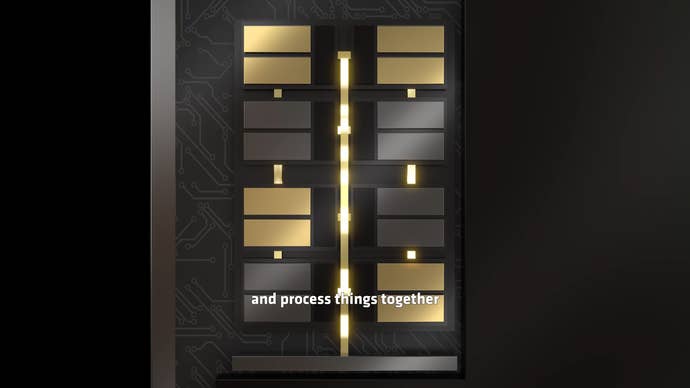Sony and AMD have just announced three key technologies that will likely appear in the PlayStation 6 and future AMD graphics cards, and PS5 system architect Mark Cerny and AMD Senior Vice President Jack Huynh teamed up to break the news. The conversation is fairly technical, but three core features—neural arrays, Radiance cores, and universal compression—look like they'll have a big impact on future AMD-based hardware. The main goal is to speed up computationally expensive ray and path tracing methods in some new ways, while also reducing the cost of the scaling and denoising methods they rely on.
Let's start with neural arrays. In short, it's a new arrangement of dozens of Compute Units (CUs) that make up a GPU, similar to the one used in PS5 for. Typically, each of these CUs works independently on a small piece of the puzzle, which makes sense for most tasks, but may not be efficient for scaling methods such as FSR or PSSR. In this way, neural arrays link multiple CUs in a “smart and efficient way” as “a single, focused artificial intelligence engine.”
The benefit is that this should allow larger (and therefore better) machine learning models to be built with less overhead and better scalability. In other words, this means that a scaling algorithm such as PSSR must perform faster at a given level of quality or achieve more in a given period of time. The same speedup applies to denoising algorithms, which are important for ray-traced or path-traced graphics.
Huynh also promises that Neural Arrays will enable new features, including “special innovations that will take cinematic rendering to a whole new level.”
Radiance Cores is the second new technology that significantly changes the hardware. Essentially, it's a new dedicated hardware block in AMD's next-generation GPUs that is “designed for unified light transmission,” i.e. ray tracing and path tracing. In the PC market, Nvidia has long had an edge in ray tracing performance thanks to its RT cores, and it looks like AMD is finally adopting a similar strategy.
Just like other specialized hardware we've seen in graphics cards over the years, such as those that handle media encoding or AI processing, Radiance cores get the job done faster than more general-purpose hardware would do the same thing. This speeds up the intensive work of ray traversal – “digging into complex data structures to determine where millions of emitted rays hit millions of triangles in the scene's geometry.”
In addition to speeding up with dedicated hardware, this change also frees up the CPU and the rest of the GPU so they can do the tasks they're best suited for, such as modeling and geometry on the CPU, and shading and lighting on the GPU.


The latest technology announced by Sony and AMD is called Universal Compression, and luckily it's a little easier to explain. In short, it's a system that compresses everything that comes into the GPU memory, not just a few types of data like textures, as is currently the case on the PS5 and PS5 Pro. Again, this is similar to existing Nvidia technology, in this case neural texture compression.
By adding this compression stage, the effective memory bandwidth of the GPU is much higher. This means frame rates can increase if you're limited on bandwidth, but more importantly it allows you to use higher quality assets and also reduces power consumption. This method has broad positive implications, but it also helps improve the efficiency of both neural arrays and Radiance Cores.
According to Cerny, these technologies currently only exist in modeling, but it is clear that both sides are confident enough to detail them at this early stage. Huynh also mentions that AMD is committed to bringing technology to developers “on every gaming platform,” which would follow the company's overall approach to open-sourcing its graphics innovations.

It will be interesting to see how these technologies perform as they begin to be implemented on actual hardware, and given the Project Amethyst partnership, it seems reasonable to assume that the two companies will make further announcements over the next few years as the technology nears completion – and when the expected PlayStation 6 is officially announced.
Beyond the PlayStation 6 rumors, we may also see these approaches used in PlayStation or Windows-based handheld gaming devices. Power consumption and memory bandwidth limitations are key issues for any mobile form factor, so there's no doubt that companies like Valve, Asus, and Lenovo will be very interested in any significant improvements. Valve is known to have stated that they are waiting for “generation leap” to justify Steam Deck 2, and this may well qualify.
Likewise, this is great news for fans of AMD desktop graphics cards, which have traditionally offered excellent price/performance in bitmap games and plenty of VRAM, but have lagged behind Nvidia alternatives in terms of RT performance and other features. AMD can significantly close this gap, and that's an exciting prospect.
Either way, I'm glad to see Sony and AMD sharing the fruits of their partnership so openly, and it's certainly food for thought when it comes to how Sony, AMD, and other tech giants are looking to leapfrog rising prices for silicon this prevented the introduction of faster and cheaper models in this console generation.







